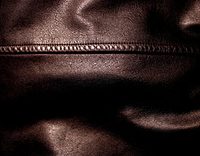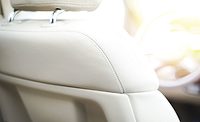Environmentally Progressive Polyurethane Coating Technologies

For example, aqueous acrylic emulsions have been used to make architectural paints since the early 1960s. Several million tons of aqueous emulsion-based paints are sold to end users and contractors annually. These paints are able to provide sufficient performance to protect and decorate buildings. With aqueous products, use of solvents in architectural coatings is significantly reduced.(1,2)
Polyurethane (PU) is widely used in industrial coatings and adhesives due to its outstanding mechanical strength, elongation, wear resistance and toughness. However, a significant portion of PU products are still solvent-based. To reduce the VOC level of these products, waterborne technologies like PU dispersions (PUDs), PU/acrylic hybrid dispersions and waterborne 2K products (OH functionalized acrylic or PU dispersions, water -dispersible polyisocyanates) have been developed. In some aspects, these technologies are able to provide comparable performance at much lower VOC levels as compared to solvent-based technologies. Due to their environmental friendliness, these technology platforms attract significant attention from academic and industrial research organizations.
Yantai Wanhua Polyurethanes Co. Ltd. is a leading manufacturer of MDI in China. In recent years, the company has invested in the research of aliphatic isocyanates and waterborne PU technology platforms including PUD, PUA and waterborne 2K. In this article, waterborne technologies developed by Wanhua are described, and their application in architectural and industrial coatings, as well as adhesives, is discussed.
Synthesis Technology Platforms2
PUDs
The pre-polymer process is used to prepare PUDs. First, aromatic or aliphatic isocyanates react with polyols to form pre-polymers. Then, dimethylolpropionic acid (DMPA) is added using N-Methyl-2-pyrrolidone (NMP) as solvent. DMPA provides stability for PUDs in water when the pH is greater than 6.0. Thirdly, butanediol (BDO) is added to extend molecular chains. If viscosity appears high, acetone is added. In the fourth step, triethylamine (TEA) is added to neutralize the carboxylic acid-containing PU chains. In the fifth step, the mixture is dispersed in water under high shear. During shear, ethylenediamine (EDA) is added to further extend PU chains. In the last step, acetone is removed.
The critical factors determining the performance of PUDs are types of isocyanates and polyols, and proportion of soft and hard segments. In order to prepare PUDs for different applications, it is necessary to understand application needs. For example, exterior architectural coatings usually require good durability, alkaline resistance, elongation and strength. To meet these needs, polyether polyol and aliphatic isocyanates with low levels of hard segments are recommended.
PU Acrylic (PUA) Dispersions
Acrylics have good weatherability, resistance to water and chemicals, and low cost. PU has good balance of strength and elongation as well as outstanding wear resistance and toughness. PUA combines the advantages of these two chemistries at lower cost in comparison with PUD. In addition, PUA has improved compatibility with acrylic dispersions.
The process for preparing PUA is similar to that for PUD in the initial steps. After PU chains are extended with BDO, acrylic monomers are added to the pre-polymer. Then this mixture is neutralized with TEA followed by dispersion in water under high shear. The resulting product is used as monomer emulsion and gradually added into the reactor. Simultaneously, initiator is gradually added into the reactor to start emulsion polymerization. In the last step, acetone is removed. The resulting emulsions have a hybrid structure of acrylic and PU chemistries.
Waterborne 2K Technology

|
| Figure 1 Click to enlarge |
Figure 1 shows the process for making water-dispersible polyisocyanate. HDI trimer is modified with hydrophilic polyether with end OH functionality under the effect of a catalyst.
Figure 2 shows that the hydrophilically modified HDI trimer has good dispersibility in water.

|
| Figure 2 Click to enlarge |
In typical 2K formulations, there are two major components: OH-functionalized dispersions, which may be acrylics or PUDs; and water-dispersible polyisocyanates. To make OH-functionalized acrylic dispersions, two methods are used: solution radical polymerization for making secondary acrylic dispersion;(3) and emulsion polymerization for making acrylic emulsions containing OH groups.(4) To make OH containing acrylic dispersions, monomers with OH functionality like hydroxyethyl methacrylate (HEMA) are used in radical polymerization. The other type of OH-functionalized dispersions are PUDs. The process for making this special type of PUD is similar to that for conventional PUD. The major difference is that OH-containing diols are added in the first step. This OH-containing diol imparts OH functional groups on the PU chains.
Application Examples

|
| Table 1 Click to enlarge |

|
| Table 2 Click to enlarge |

|
| Table 3 Click to enlarge |

|
| Table 4 Click to enlarge |

|
|
Table 5 Click to enlarge |
Leather Finishing
Table 1 lists the physical properties of PUDs prepared for leather finishing. These PUDs have different hardness through adjusting the ratio of soft/hard segments.
Table 2 shows the performances of these PUDs in leather finishing applications. It is clear that these PUDs with different compositions and soft/hard segment ratios can meet the requirements of base, middle and topcoats on genuine leather surfaces.
Wood Coating
Table 3 shows the physical properties of PUD, PUA, OH acrylic dispersions and water-dispersible HDI trimer for wood coatings.
Table 4 shows the performance of formulations based on PUD, PUA and 2K polymers.
Table 5 shows the model formulations for wood coatings.
It is clear that the formulations based on PUD, PUA and 2K polymers provide satisfactory application performance. In general, 2K formulations deliver improved resistance to wear, water and chemicals, as well as better hardness in comparison with 1K formulations.

|
| Figure 3 Click to enlarge |
In addition to conventional PUDs, functional PUDs with formaldehyde absorption and antimicrobial activity were prepared. Figure 3 shows that films prepared from formaldehyde-absorbing PUD can effectively react with formaldehyde. Tube number 1 contains water.
After a formaldehyde indicator solution is added, its color does not change and retains its original brown color. Tube number 3 contains formaldehyde solution. Once a formaldehyde indicator agent is added into tube 3, its color changes to purple from brown. Tube number 2 contains supernatant solution from the vial shown in Figure 3, which is filled with formaldehyde solution and films prepared from the formaldehyde-absorbing PUD. This result confirms the effectiveness of the formaldehyde-absorbing PUD.

|
| Table 6 Click to enlarge |
Table 6 shows the antimicrobial results of the films prepared from PUDs treated with two different approaches. These two approaches are both based on silver ions, which are the safest way to provide antibacterial effects. PUDs treated with approaches A and B both show effective activity.

|
| Table 7 Click to enlarge |
Metal Protection
Table 7 shows the physical properties of 2K polymers prepared for metal protection application.
Table 8 shows the application properties of a formulation based on Wanhua’s materials and a commercial 2K formulation for metal protection. These two formulations show comparable performance in terms of major properties like anticorrosion, adhesion, hardness and durability.

|
| Table 8 Click to enlarge |
Elastomeric Wall Coating
Table 9 shows the physical properties of PUA for making elastomeric wall coating formulations.

|
| Table 9 Click to enlarge |
Table 10 shows the application properties of a formulation based on PUA and a commercial elastomeric wall paint. Both formulations contain about 35% PVC (pigment volume concentration). The commercial paint is based on an acrylic dispersion. Table 10 shows that PUA provides better strength and low temperature elongation as compared to the acrylic dispersion.

|
| Table 10 Click to enlarge |
Adhesives
Two PUDs for adhesive applications were prepared and their physical properties are listed in Table 11. Table 11 also lists their application performance as adhesives.

|
| Table 11 Click to enlarge |
Peel strength was conducted using a simple method. Two pieces of flexible PVC films were prepared and a PUD sample was coated onto the surface of one piece. This piece was heated to a temperature above the heat activation temperature and held at that temperature for about 10 m. Then the sample was taken out and the other piece was adhered under a given level of pressure. The initial peel strength was evaluated 10 m after the two pieces were pressed together using a hand tear method. One-day peel strength was tested using the same method one day after the two pieces were pressed together.
It is worth noting that the peel strength as well as the resistance to high temperature and water of Wanhua’s H12MDI PUD can be significantly enhanced by blending a small portion of Wanhua’s water-dispersible HDI trimer. Results are not shown here.
DSC tests were carried out according to the following protocol: the temperature was increased from 25 ºC to 180 ºC at a rate of 10 ºC /m; then the temperature was lowered to -100 ºC at a cooling rate of 10 ºC /m followed by equilibrium stage at -100 ºC for 10 m; finally temperature was raised to 180 ºC at a heating rate of 10 ºC /min. During the test, nitrogen was used to protect the sample from oxygen.

|
| Figure 4 Click to enlarge |
Figure 4 shows that Wanhua’s H12MDI-based PUD does not have the crystallization peak at a temperature of ~0 ºC, as does the commercial product. One hypothesis is that during the cooling cycle, the amorphous phase in the commercial product did not have sufficient time to crystallize and directly changed to a solid, glassy phase due to its relatively lower mobility of molecular chains. This indicates that Wanhua’s H12MDI-based PUD has a capability of fast crystallization leading to good initial peel strength (shown in Table 11).
Summary
To reduce the VOCs used in PU-based coatings, Yantai Wanhua Polyurethanes Co. Ltd. developed waterborne technologies including PUD, PUA and waterborne 2K. Materials prepared with these technologies provide sufficient performance for applications in many areas like leather finishing, wood coatings, metal protection, elastomeric wall coatings and adhesives. In addition, these materials deliver extra functions like formaldehyde absorption and antimicrobial activity.
Acknowledgements
The authors want to thank Ms. Jie Zhang, Ms. Hong Zhang, Mr. Xuesun Ji, Mr. Longyue Zhang, Mr. Bo Liu, Mr. Weizu Sun, and Mr. Xiaodong Qiao for preparing and evaluating samples.
This paper was presented at the Polyurethanes 2010 Technical Conference, sponsored by the Center for the Polyurethanes Industry of the American Chemistry Council, in partnership with UTECH North America, in Houston, Texas.
Looking for a reprint of this article?
From high-res PDFs to custom plaques, order your copy today!







